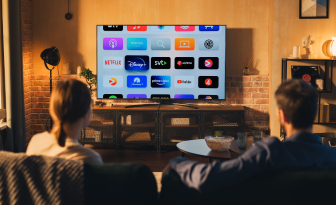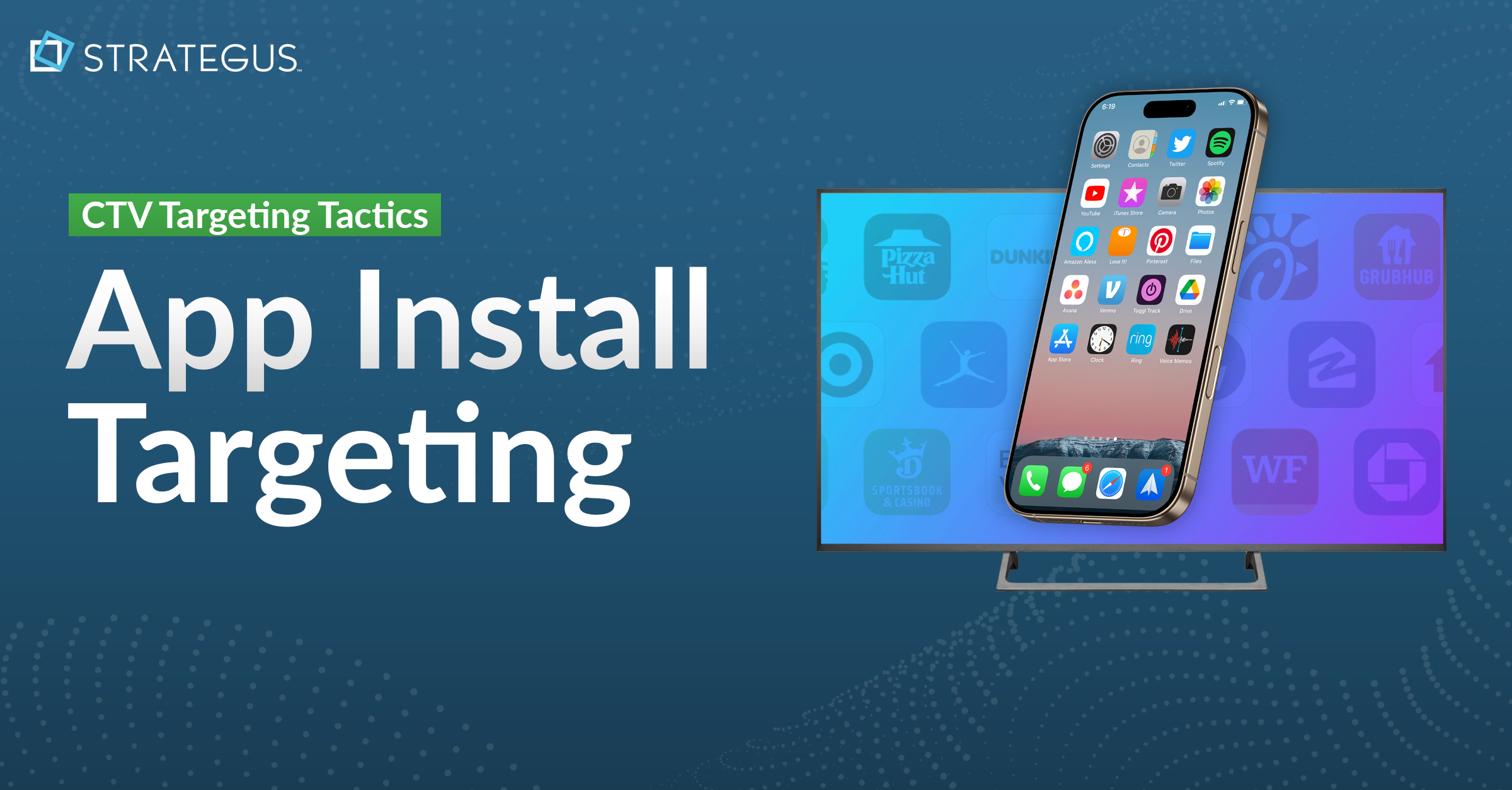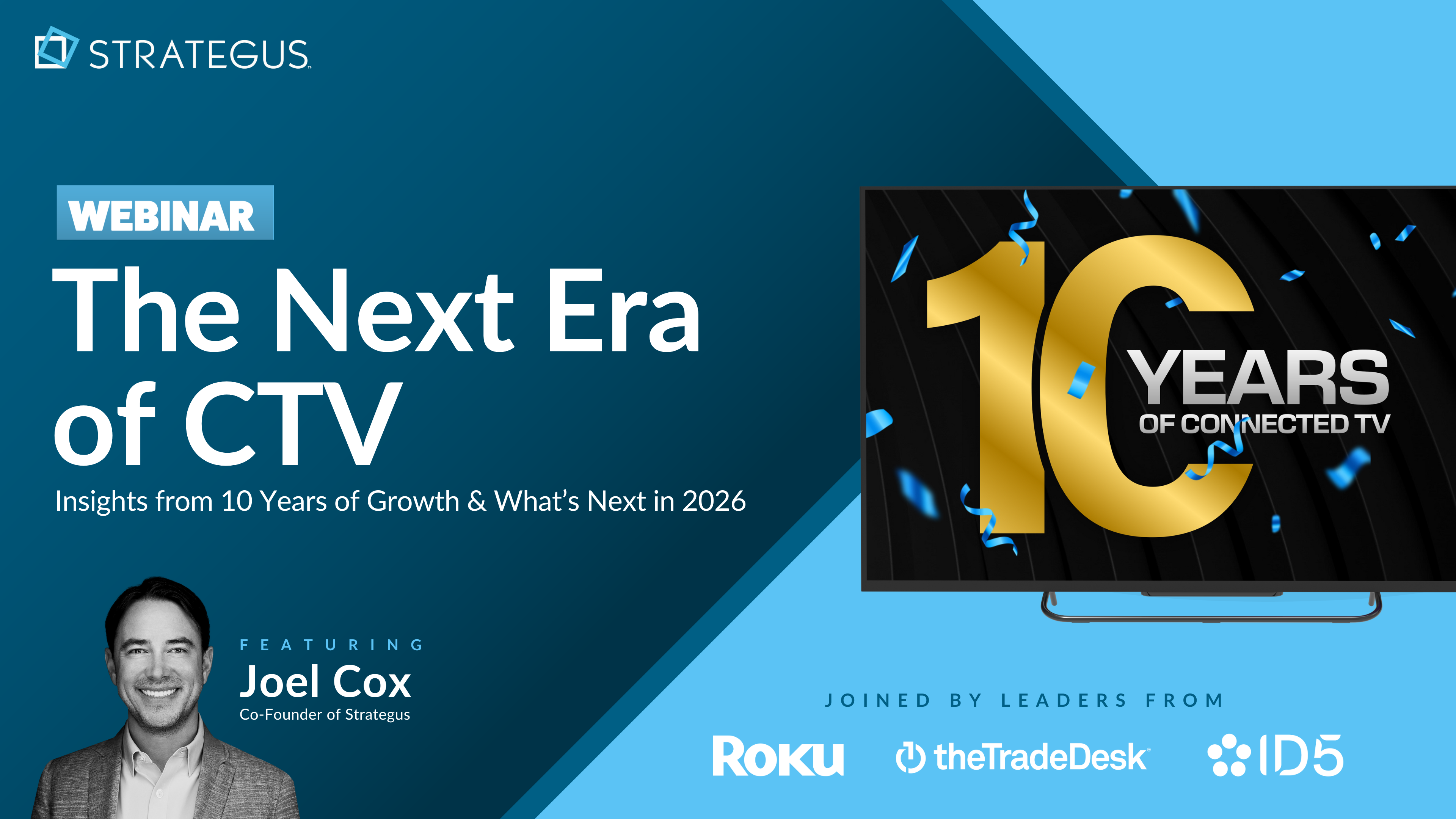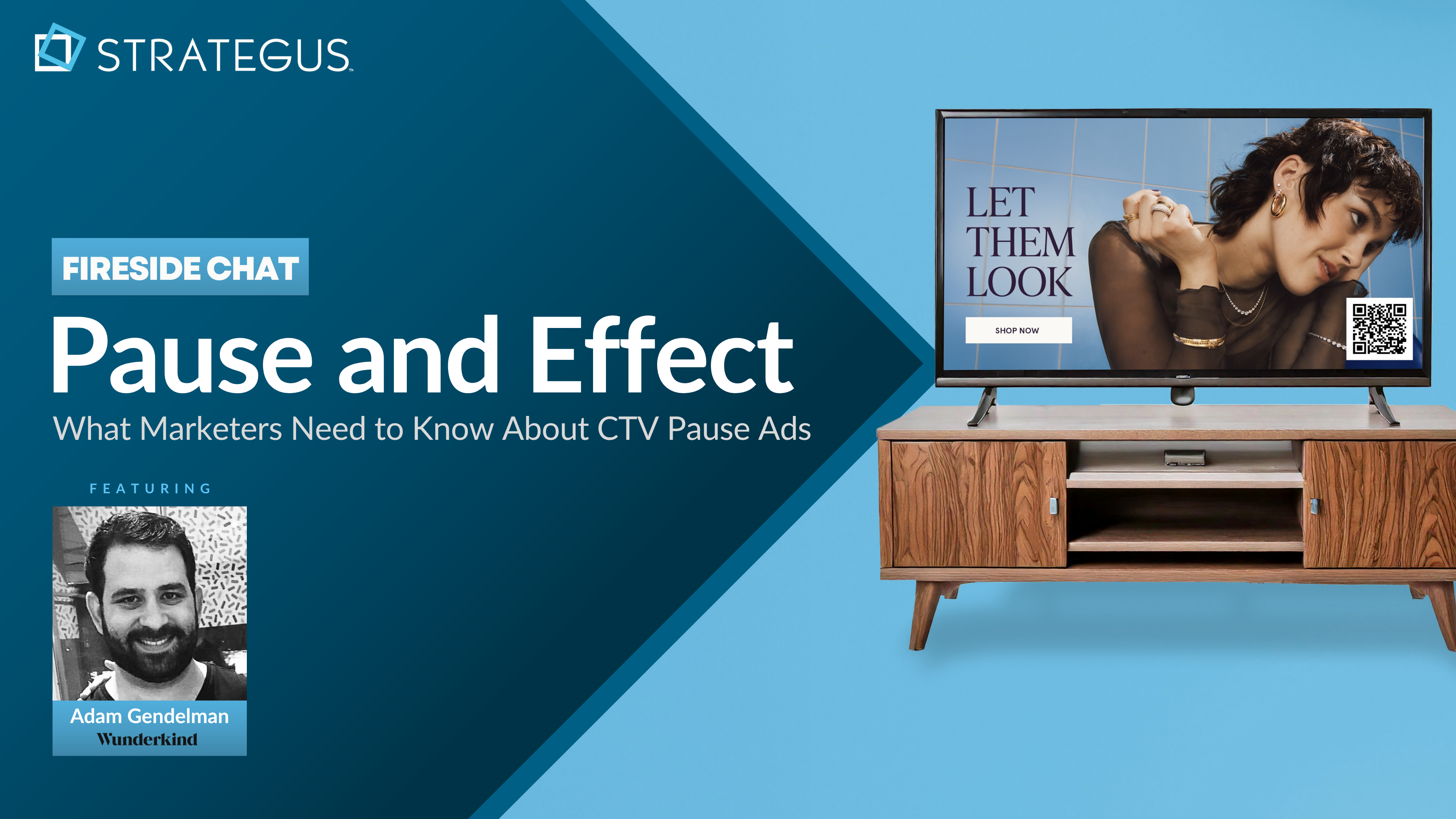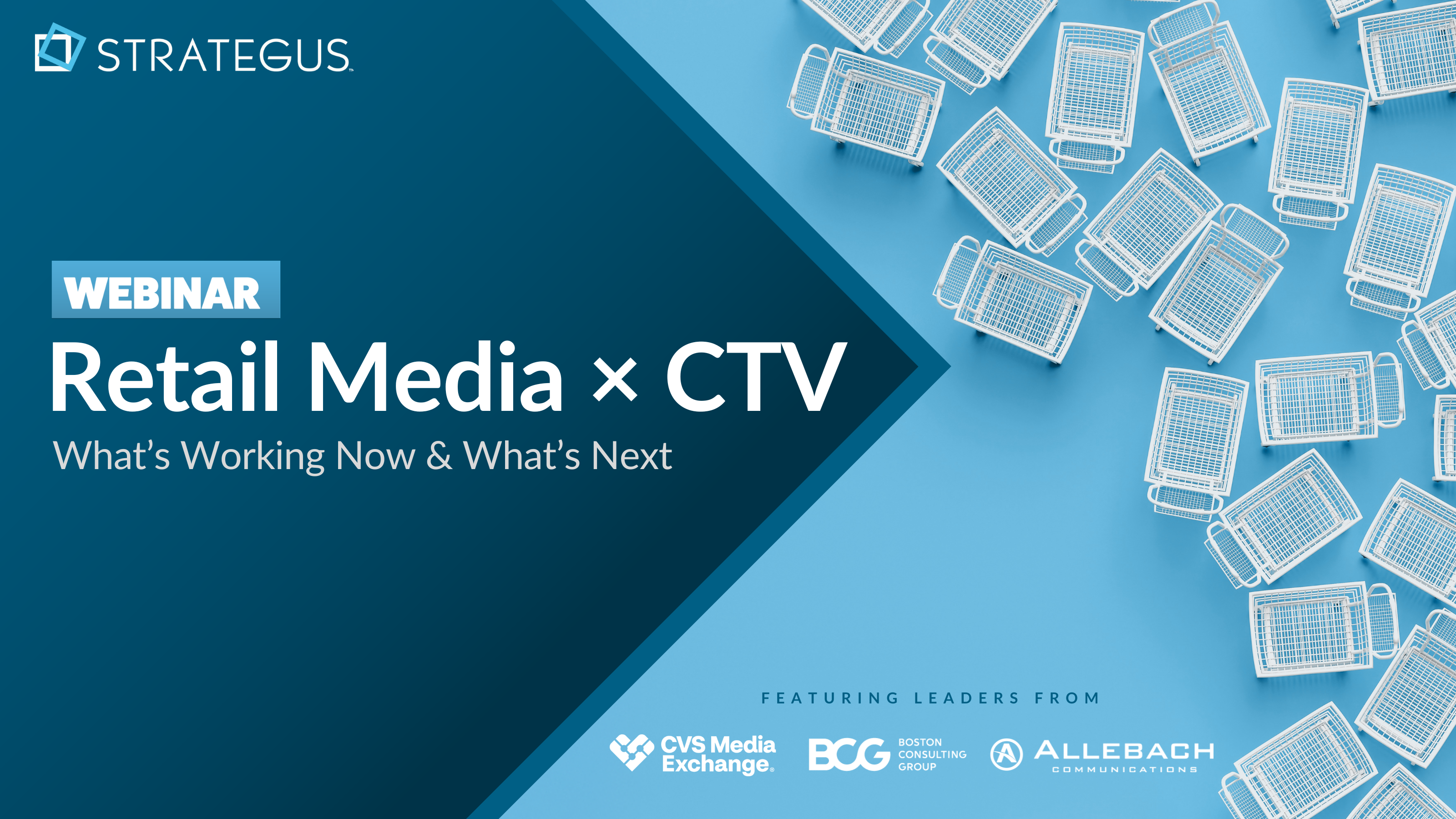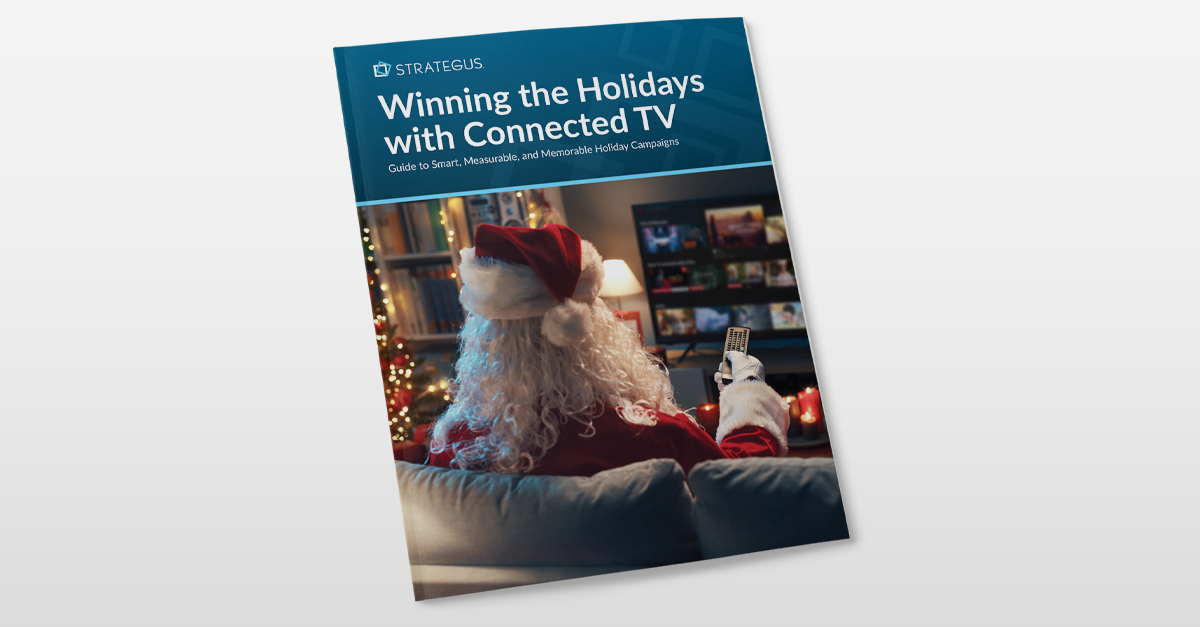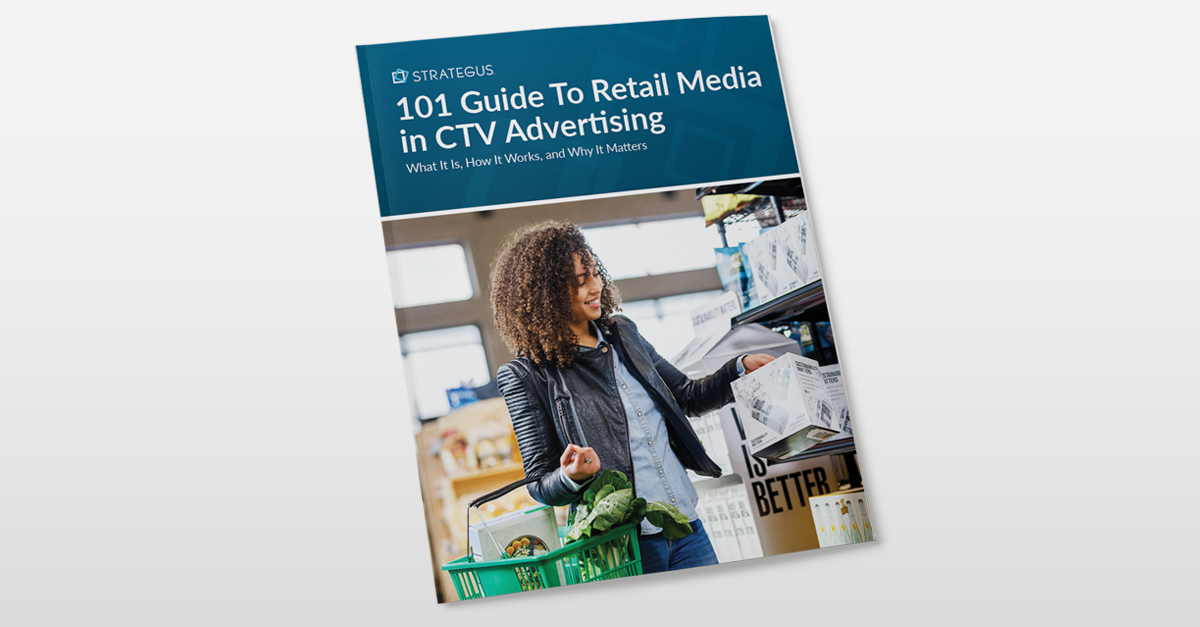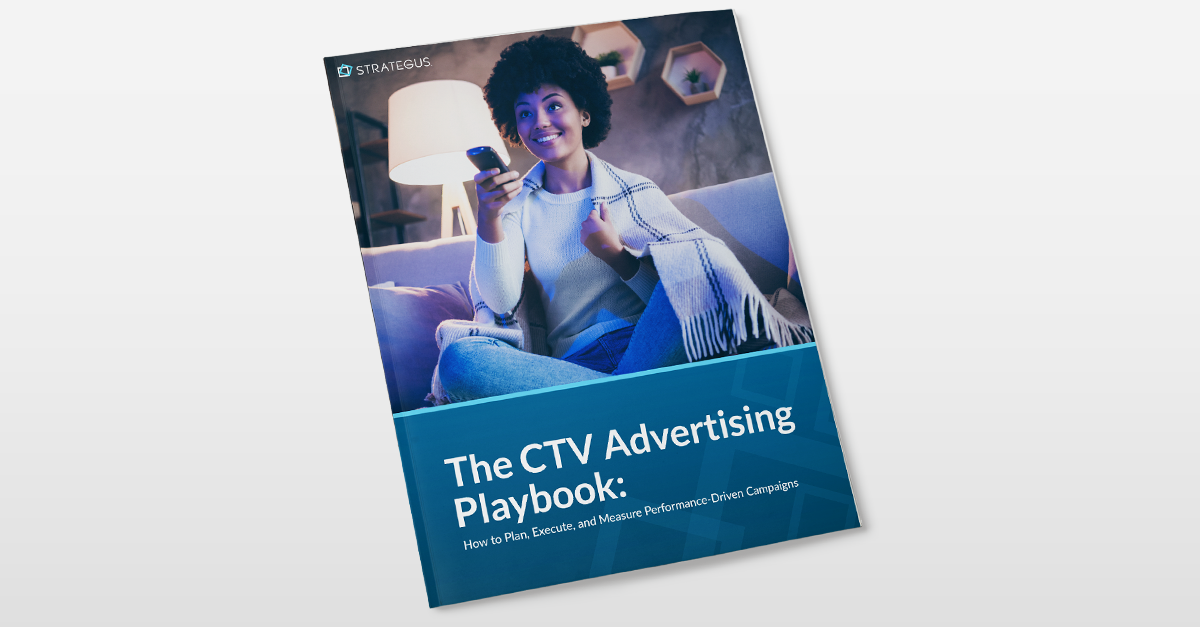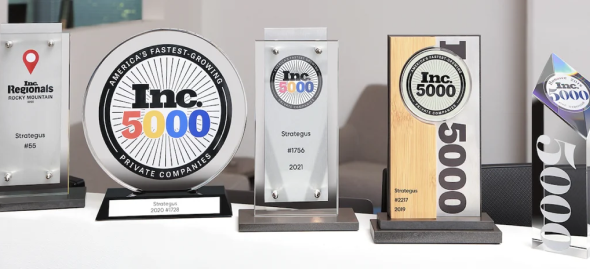- Home
- Strategus Blog
- AVOD vs SVOD vs MVPD vs vMPVD: Ultimate VOD Guide For Advertisers
AVOD vs SVOD vs MVPD vs vMPVD: Ultimate VOD Guide For Advertisers
 Andy Dixon
Andy Dixon
11 minutes read
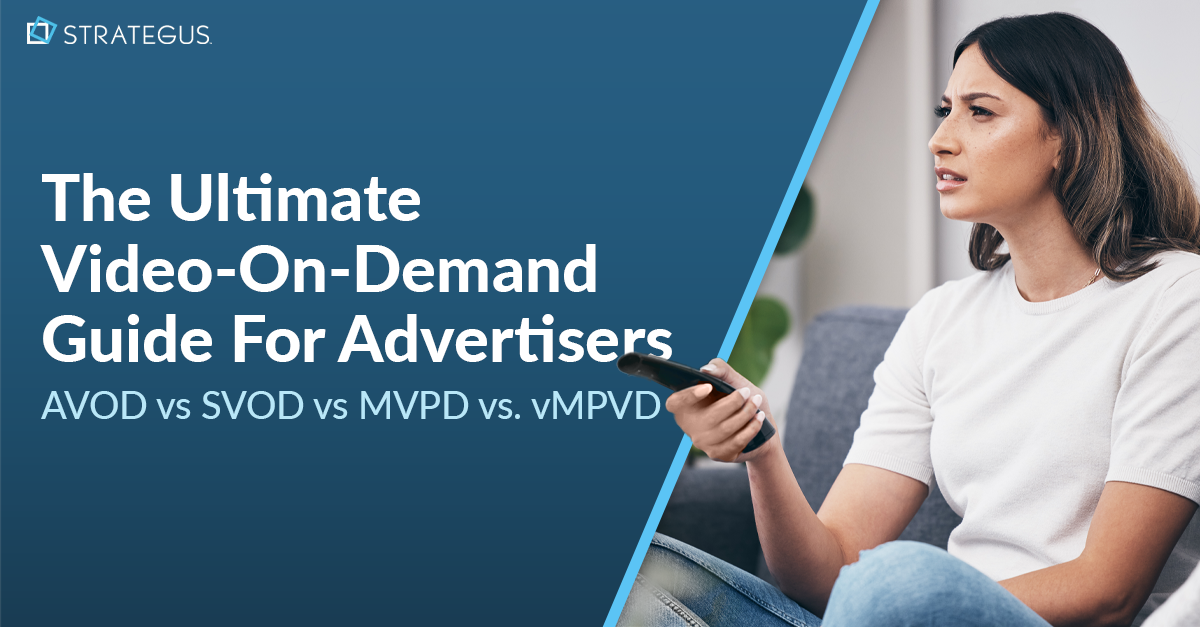
Digital advertising is full of new terms, and keeping up is half the battle. Among the many acronyms in streaming, here’s the key point: SVOD, AVOD, MVPD, and vMVPD are all part of OTT (Over-The-Top).
OTT simply means video delivered over the internet, skipping traditional cable and satellite. Each of these models fits into the OTT ecosystem differently. Here’s how they compare and why it matters for advertisers.
What’s the Difference Between MVPD, vMPVD, AVOD, and SVOD?
MVPDs are traditional cable/satellite providers. vMVPDs stream live TV over the internet. AVOD platforms offer free content with ads. SVOD services charge a subscription for ad-free or limited-ad content. Each differs in delivery, cost, and ad experience.
The world of digital advertising is filled with acronyms that can be overwhelming. To make sense of it all, it's essential to see how MVPD, vMVPD, AVOD, and SVOD fit within the broader OTT landscape.
Each platform has distinct characteristics and business models that define their place in the digital media world. This guide will break down these differences, helping you navigate the complex OTT ecosystem effectively. Take a deep breath and let's get started!
1. What is MVPD: The Traditional Contender
MVPD stands for Multichannel Video Programming Distributor. These are providers like Comcast or DirecTV that deliver lots of TV channels through cable or satellite. They make money mainly from subscriptions, with some ads too.
MVPDs are best for people who enjoy traditional TV, live sports, news, and entertainment all in one place.
Popular MVPDs: AT&T U-Verse, Comcast Xfinity, Cox, DirecTV, Dish Network, Verizon Fios
How They’re Adapting: To keep up with cord-cutting, MVPDs now include streaming apps like Netflix in their services. For example, Xfinity X1 lets you access regular TV channels and stream shows from Netflix and Amazon Prime on the same screen.
They’re also improving their internet service to support streaming and teaming up with platforms like Disney+ to offer bundles.
2. What is a vMVPD: The Virtual Evolution
vMVPDs, or Virtual Multichannel Video Programming Distributors, are like cable TV, but online. They let you stream live and on-demand channels over the internet, with no cables or satellite dishes needed. Popular examples include YouTube TV, Sling TV, and Hulu + Live TV.
Popular vMVPDs: DirecTV Stream, fuboTV, Hulu, Philo, Sling TV, YouTube TV
Why People Like Them: vMVPDs are great for cord-cutters who still want live TV but with more flexibility and lower costs. You get channel bundles like cable, but you can stream them on phones, tablets, or smart TVs.
However, vMVPDs have to deal with rising content costs and tough competition from both cable and streaming-only services. Still, they stay competitive by quickly adapting to what viewers want.
3. What Does AVOD Mean: The Free Streaming Champion
AVOD stands for Advertising-Based Video On Demand. These platforms, like YouTube and the free version of Hulu, let you watch shows and movies for free—but with ads.
Popular AVOD Platforms: Crackle, Hulu (with ads), Plex, Pluto TV, Samsung TV Plus, Tubi, Vudu
AVOD is popular because it offers free content, which is especially appealing when people want to save money. Services like Pluto TV and Tubi use smart ad placements that don’t ruin the viewing experience.
How Ads Are Used: To keep viewers happy, AVOD platforms make sure they don’t show too many ads. They use viewer data to make ads more relevant, so they feel less annoying and more useful.
4. What Does SVOD Mean: The Premium Experience
SVOD stands for Subscription Video On Demand. These services—like Netflix, Disney+, and Amazon Prime Video—charge a monthly fee so you can watch shows and movies without any ads.
SVOD usually means the ad-free version of a platform. For example, Hulu offers both ad-supported and ad-free plans, but SVOD refers to the ad-free one.
Popular SVOD Platforms: Amazon Prime Video, Apple TV, Disney+, HBO Max, Hulu (no ads), Netflix, Paramount+
Why Viewers Subscribe: SVOD platforms spend big on original content to stand out and keep subscribers. Think of Netflix originals or Disney+ exclusives. These unique shows and movies help build loyalty and keep people coming back.
Exclusive content gives each platform a competitive edge. It also pushes all SVOD services to keep improving, leading to better storytelling, higher-quality production, and more choices for viewers.
How to Market on AVOD vs SVOD Platforms
As more people switch to on-demand streaming, advertisers need to change how they connect with viewers. AVOD and SVOD work differently, so your strategy should match each one.
1. AVOD: Get in Front of the Right People
- Use targeted ads that match the viewer: Show ads based on things like age, location, and what someone is watching. This helps make sure your ad is seen by the right audience at the right time.
- Make ads interactive to hold attention: Add features like polls, clickable links, or QR codes so people can take action right from the screen. This makes your ads more engaging and memorable.
- Track what works and adjust quickly: Watch for things like how many people watch your ad, click, or take action. Test different versions to see what gets the best results and improve as you go.
2. SVOD: Connect Through Content, Not Interruptions
- Work with shows your audience cares about: SVOD platforms use original content to keep subscribers. Brands can sponsor these shows or appear in them to connect with loyal viewers in a natural way.
- Fit into the personalized experience: These platforms suggest shows based on what people watch. You can tie your brand to special perks like early access or members-only content to add value.
- Keep your message short and meaningful: SVOD viewers don’t expect lots of ads, so use the limited space wisely. Focus on clear, helpful messages that match the look and feel of the platform.
Basically, use AVOD to reach more people with targeted, interactive ads. Use SVOD to build trust through great content and thoughtful brand placement. The right mix of both helps you stay relevant and effective.
At Strategus, we specialize in tailoring advertising strategies to meet the specific goals of our clients, ensuring that their campaigns reach the right audience on the right platform.
Let us help you harness the power of these dynamic platforms to achieve your advertising objectives and drive success in the ever-evolving digital market.
AVOD vs. SVOD – Which Reigns Supreme in OTT?
In streaming, AVOD and SVOD work in different ways to get people to watch.
- AVOD lets you watch for free but shows ads.
- SVOD charges a monthly fee and has no ads.
Both are popular for different reasons.
Here’s a table to quickly show how they’re different:
|
Feature |
AVOD |
SVOD |
|
Revenue Generation |
Primarily through advertisements. |
Mainly from monthly or annual subscription fees. |
|
Primary Audience |
Cost-conscious viewers who prefer free or low-cost access. |
Viewers who value an ad-free experience and are willing to pay for quality content. |
|
Appeal During Economic Downturns |
More appealing as consumers look to cut costs. |
Less appealing due to subscription costs, potential for subscription fatigue. |
|
Content Access |
Often offers a mix of free and premium tiers with ads. |
Typically offers all content ad-free with tiered viewing options based on price. |
|
Viewer Experience |
Ad interruptions are common but improving with targeted and interactive ads. |
Seamless and uninterrupted viewing, with a focus on user-friendly interfaces. |
AVOD vs SVOD: Prospective Market Trends
The streaming space is changing fast. Here’s what to watch as AVOD and SVOD evolve:
- Better tech = better experiences: Faster internet and better streaming quality (like 4K and VR) are improving how people watch content. Smarter recommendations and smoother playback may push more users toward paid SVOD—but AVOD will benefit too.
- Privacy and budget pressures: People are getting more selective. SVOD appeals to those who want fewer ads and more privacy. But with rising costs and too many subscriptions, many viewers are shifting back to AVOD or rotating between platforms to save money.
- Hybrid models are on the rise: More platforms now offer both: free, ad-supported access and premium, ad-free upgrades. This mix gives viewers flexibility—and lets platforms reach a wider audience.
What This Means for Advertisers
No single model will win. Expect more crossover and custom options. To stay ahead, build flexible strategies that work across AVOD, SVOD, or both, based on your audience and goals.
Learn more about SVOD vs AVOD here.
How MVPDs Are Keeping Up With AVOD and SVOD
As more viewers move to on-demand streaming, traditional cable providers (MVPDs) are changing fast to keep up. This shift is part of a larger move toward flexible, digital-first viewing experiences.
How They’re Adapting
MVPDs aren’t sitting still, they’re actively adapting in several ways:
- Teaming up with streaming platforms: Many providers now bundle or integrate services like Netflix and Amazon Prime. Comcast, for example, includes Netflix on Xfinity, making it easy for users to access both cable and streaming from one interface.
- Launching their own streaming services: To stay competitive, MVPDs are creating hybrid services that combine traditional and digital TV. AT&T, for instance, rebranded DirecTV to offer both satellite and internet-based viewing options.
- Upgrading the user experience: MVPDs are adding features like voice search, personalized recommendations, and mobile streaming—mirroring the convenience offered by AVOD and SVOD platforms.
Challenges They Still Face
Despite these changes, MVPDs still face major challenges:
- Subscriber loss: As more people cut the cord, MVPDs must offer better value, flexible pricing, and content bundles to keep users from switching to cheaper streaming options.
- Keeping up with innovation: To compete, MVPDs need to move faster—offering on-demand access, broader content libraries, and tech-forward services that match user expectations.
- Rising content costs: Licensing popular shows and channels is expensive. MVPDs must strike a balance between securing premium content and keeping costs sustainable.
Basically, MVPDs can’t rely on legacy models. To stay in the game, they need to double down on digital transformation, combining their existing strengths with a more modern, streaming-focused approach.
Harness the Future of On-Demand Video Advertising
AVOD, SVOD, MVPD, and vMVPD platforms all serve different viewer behaviors—and demand different advertising strategies.
At Strategus, we help you cut through the complexity and deliver results across connected TV and video-on-demand platforms.
With Strategus, you get:
- Custom strategies for AVOD, SVOD, and MVPD campaigns
- Advanced targeting across devices and platforms
- Real-time performance tracking and optimization
- Deep expertise in programmatic CTV buying
- Full-funnel attribution that ties views to outcomes
Ready to make the most of today’s streaming ecosystem?
Contact us today to speak with a CTV expert.
Frequently Asked Questions
What Are MVPDs?
MVPDs (Multichannel Video Programming Distributors) are traditional cable and satellite providers like Comcast, DISH, or Spectrum. They deliver linear TV channels to subscribers over wired or satellite infrastructure. MVPDs bundle multiple channels and charge monthly fees, usually with long-term contracts and limited on-demand features.
What's the Best OTT Platform for Budget-Conscious Advertisers?
AVOD platforms are best for budget-conscious advertisers. They offer free access to audiences and lower ad costs per impression. With precise targeting and scalable reach, AVOD helps stretch budgets while maintaining visibility and performance in ad campaigns.
Is vMVPD Advertising More Effective Than MVPD for Reaching Cord-Cutters?
Yes. vMVPDs reach digital-first, cord-cutting audiences who don't use cable. Since vMVPDs run over the internet, advertisers get better data targeting and measurement tools. They're ideal for brands targeting younger, streaming-savvy viewers in a live-TV format.
How Do Advertisers Measure Success on AVOD vs SVOD?
AVOD campaigns focus on impressions, view-through rates, and conversions. SVOD partnerships (like sponsored content or product placement) prioritize engagement, brand lift, and retention. Success metrics differ based on ad format, content integration, and platform tracking capabilities.
What Are Hybrid OTT Models, and How Do They Work for Advertisers?
Hybrid models combine AVOD and SVOD—e.g., Disney+ offers ad-supported and premium tiers. Advertisers get access to AVOD audiences while the platform also drives revenue from subscriptions. Hybrid platforms provide wider audience coverage with flexible budget options.
Should I Advertise on AVOD or vMVPD if I Want Live Event Placements?
Choose vMVPD for live events like sports or award shows—it offers real-time ad slots. AVOD focuses on on-demand content, which may not support live airing. If your campaign benefits from event-based exposure, vMVPD delivers better alignment and timing.
How Do Audience Demographics Differ Between AVOD and SVOD?
AVOD typically attracts younger or budget-sensitive users open to ads. SVOD skews toward middle-to-upper-income viewers willing to pay for premium, ad-free content. Knowing these audience traits helps align your creative and messaging for better engagement.
Can Small Businesses Afford to Advertise on OTT Platforms?
Yes. AVOD platforms offer self-serve tools with low minimum spend, making them accessible to small businesses. Local targeting, flexible budgets, and measurable performance make OTT a cost-effective alternative to traditional TV for smaller brands.
Which OTT Platform Is Best for Brand Awareness vs Conversions?
Use SVOD or vMVPD with high-quality content and limited ads for brand awareness through sponsorships or integrations. For conversions, AVOD is better with its scalable reach, lower CPAs, and actionable targeting tools like clickable overlays or dynamic ad insertion.
What's the Role of Data in OTT Advertising?
OTT platforms collect rich first-party data (viewing habits, demographics, engagement) to enable precise targeting. This data helps advertisers personalize ads, optimize placement, and improve ROI– especially on AVOD and vMVPD platforms where ad delivery is dynamic and measurable.

Andy Dixon is a seasoned Content Writing Specialist at Strategus, renowned for his expertise in creating engaging and impactful digital content. With over a decade of experience in content creation, Andy has honed his skills in a variety of niches, ranging from technology and marketing to education.
Strategus is a managed services connected TV(CTV) advertising agency with over 60,000+ campaigns delivered. Find out how our experts can extend your team and drive the result that matter most.
Talk to an Expert
Table of Contents
- What’s the Difference Between MVPD, vMPVD, AVOD, and SVOD?
- MVPD: The Traditional Contdner
- vMPVD: The Virtual Evolution
- AVOD: The Premium Experience
- SVOD: The Premium Experience
- Strategic Marketing Approaches in AVOD and SVOD
- AVOD vs. SVOD - Which Reigns Supreme in OTT?
- The Shift from MVPD to AVOD and SVOD
- Harnessing the Future of On-Demand Video
Seeking a Custom CTV Strategy That Delivers?
What to read next
App Event Tracking: Tie Mobile App Activity to CTV Campaigns
Let’s say you’re running a CTV campaign for a personal finance app.
5 minutes read

Stop Guessing Who Your Audience Is — Let Their Apps Tell You
Connected TV (CTV) targeting often falls in one of two camps.
8 minutes read
See Who Bought After Your Ad + How Much They Spent
You can’t improve what you can’t measure. And for years, that’s been a major problem with TV advertising.
4 minutes read
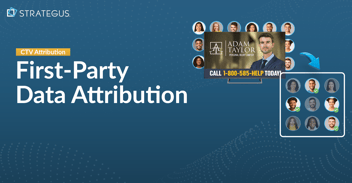
First-Party Attribution: Match Ads to Sales With CRM Data
The value of first-party data continues to grow.
7 minutes read

